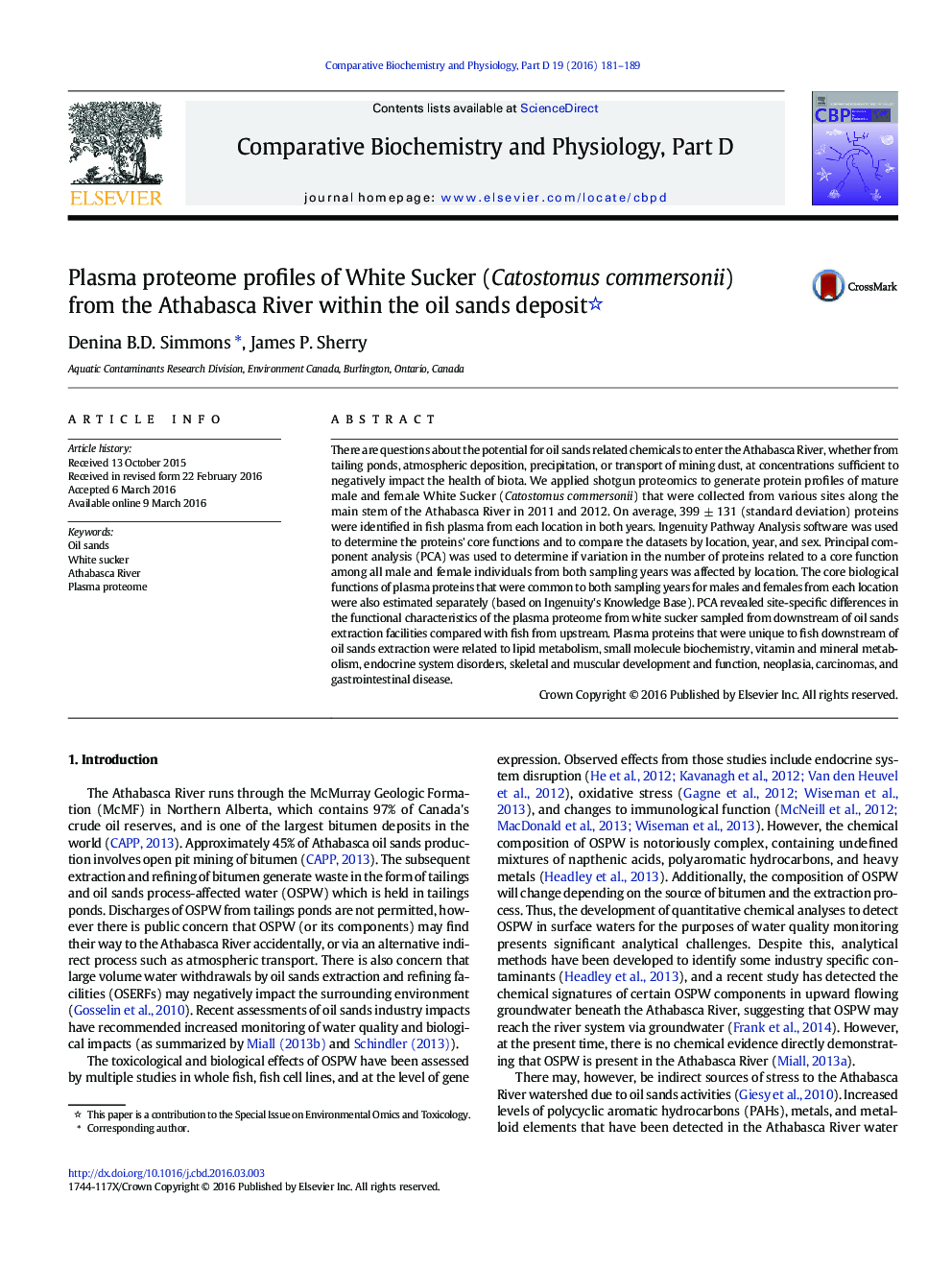| Article ID | Journal | Published Year | Pages | File Type |
|---|---|---|---|---|
| 1978506 | Comparative Biochemistry and Physiology Part D: Genomics and Proteomics | 2016 | 9 Pages |
There are questions about the potential for oil sands related chemicals to enter the Athabasca River, whether from tailing ponds, atmospheric deposition, precipitation, or transport of mining dust, at concentrations sufficient to negatively impact the health of biota. We applied shotgun proteomics to generate protein profiles of mature male and female White Sucker (Catostomus commersonii) that were collected from various sites along the main stem of the Athabasca River in 2011 and 2012. On average, 399 ± 131 (standard deviation) proteins were identified in fish plasma from each location in both years. Ingenuity Pathway Analysis software was used to determine the proteins' core functions and to compare the datasets by location, year, and sex. Principal component analysis (PCA) was used to determine if variation in the number of proteins related to a core function among all male and female individuals from both sampling years was affected by location. The core biological functions of plasma proteins that were common to both sampling years for males and females from each location were also estimated separately (based on Ingenuity's Knowledge Base). PCA revealed site-specific differences in the functional characteristics of the plasma proteome from white sucker sampled from downstream of oil sands extraction facilities compared with fish from upstream. Plasma proteins that were unique to fish downstream of oil sands extraction were related to lipid metabolism, small molecule biochemistry, vitamin and mineral metabolism, endocrine system disorders, skeletal and muscular development and function, neoplasia, carcinomas, and gastrointestinal disease.
